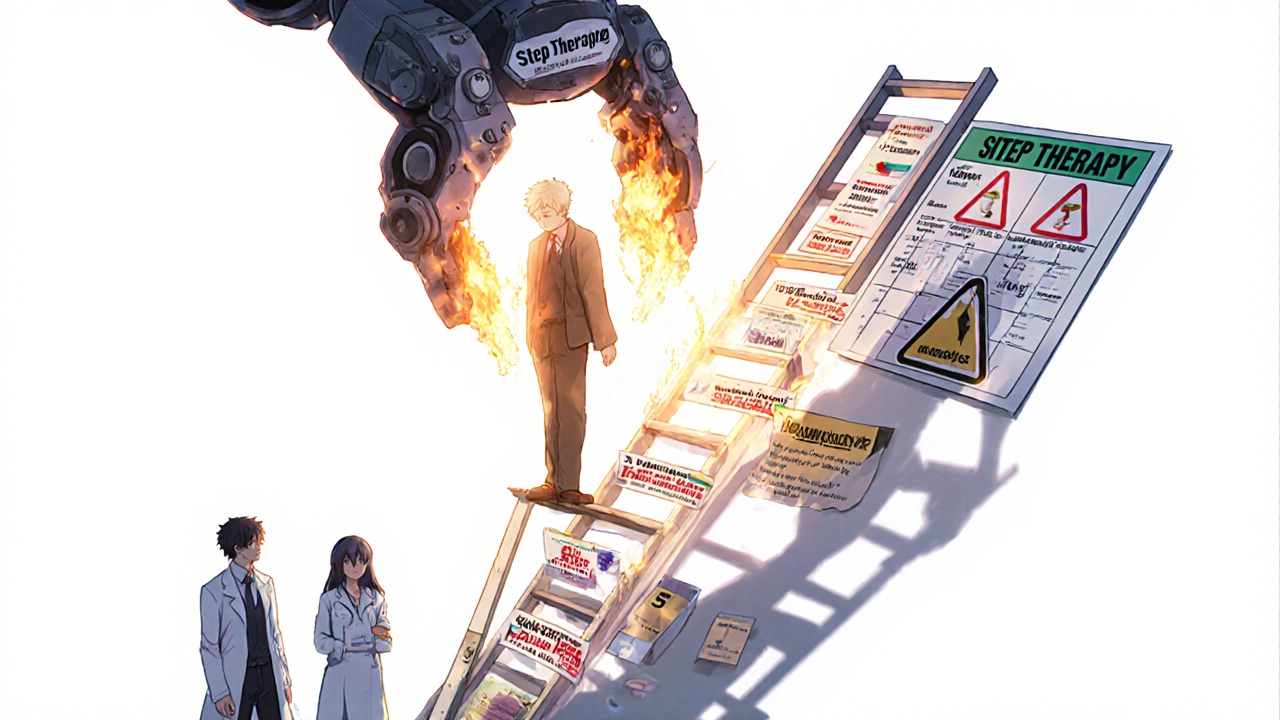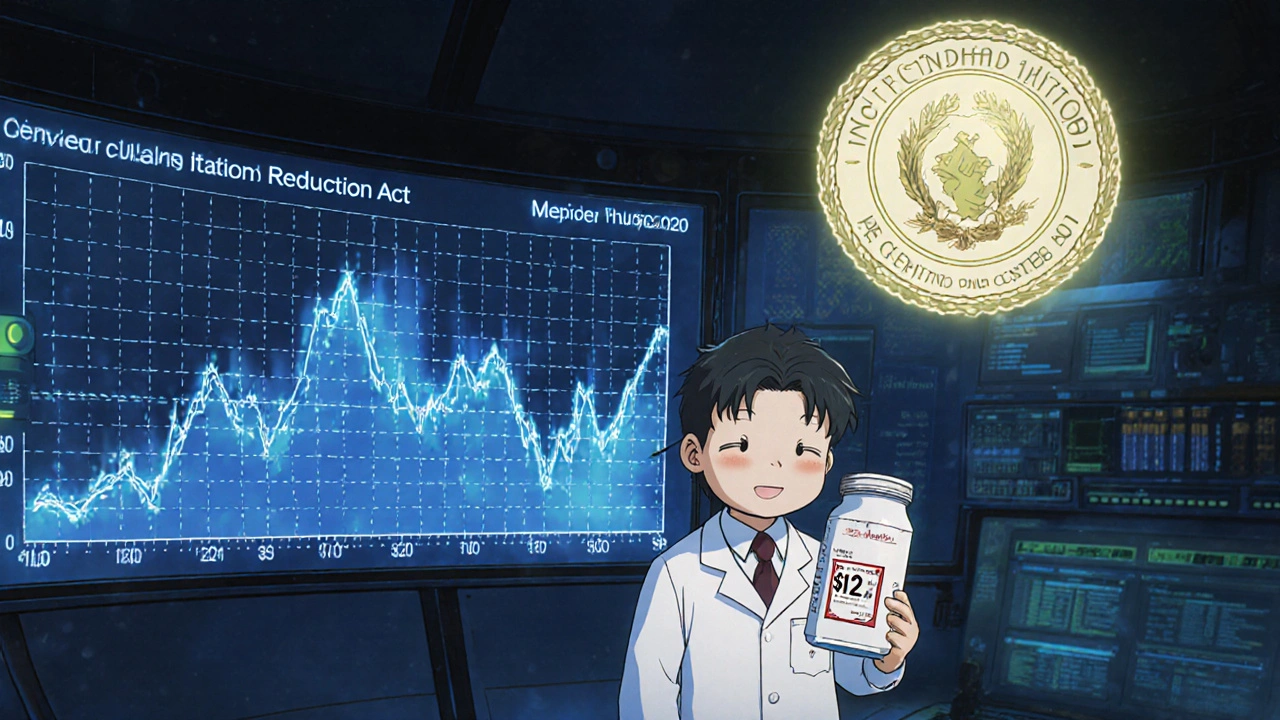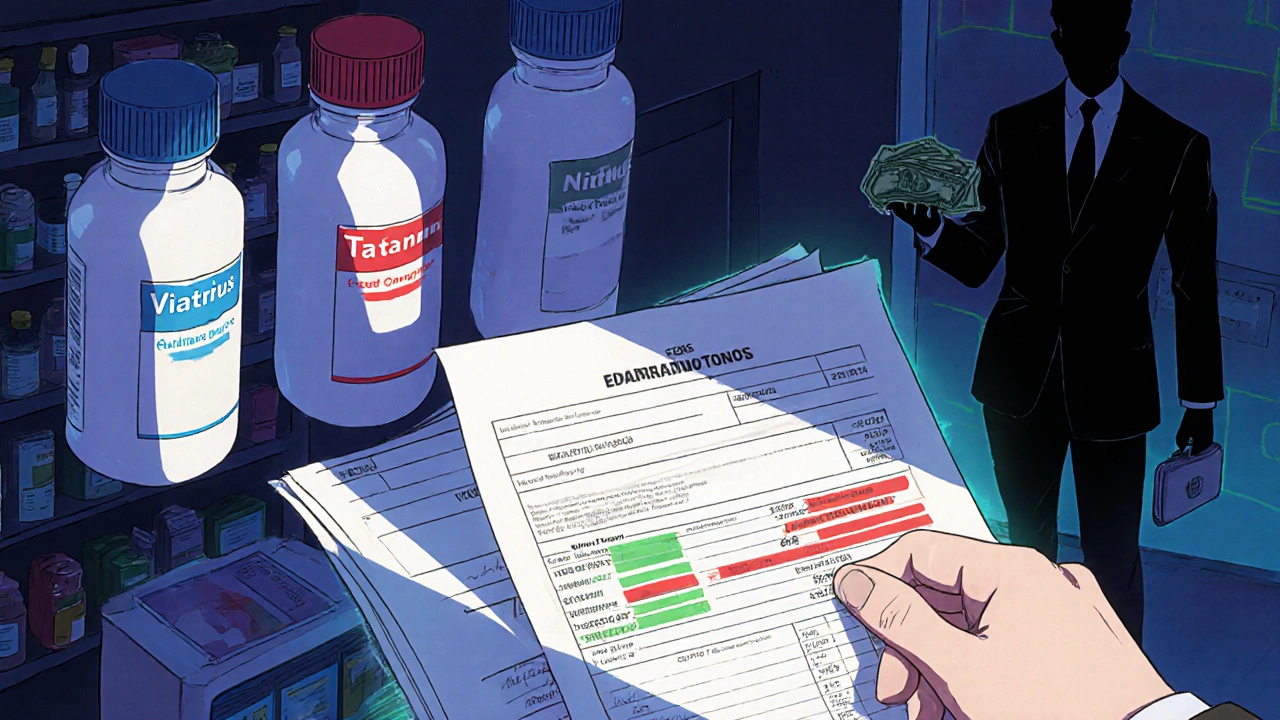Every year, Americans spend over $600 billion on prescription drugs. But here’s the twist: generic drugs make up 91.5% of all prescriptions filled - yet they account for just 22% of total spending. That’s not magic. It’s smart insurance design. Health plans didn’t stumble into this. They built it - step by step - to stop runaway drug costs from eating into their budgets and your paycheck.
How Generics Became the Default
The story starts in 1984 with the Hatch-Waxman Act. Before this law, if your doctor prescribed Lipitor, you got Lipitor - no alternatives, no discounts. Generic versions were rare, slow to approve, and often unreliable. Hatch-Waxman changed that. It created a clear path for generic manufacturers to prove their drugs were just as safe and effective as the brand-name version - without repeating expensive clinical trials. Suddenly, companies like Teva and Viatris could flood the market with cheaper versions of blockbuster drugs. By 2023, generics saved the U.S. healthcare system over $370 billion in a single year.Insurers didn’t wait around. They built systems to push patients toward these cheaper options. The most common tool? Tiered formularies. Think of your drug plan like a pricing ladder. Tier 1 is for generics - usually $0 to $10 for a 30-day supply. Tier 2 is for preferred brand-name drugs - $25 to $50. Tier 3? Non-preferred brands. That’s where you pay $60, $80, even $100+.
It’s not complicated. If you take a generic, you pay less. If you insist on the brand, you pay more. And insurers make sure you know it. Your Explanation of Benefits (EOB) statement now shows exactly how much you saved by choosing the generic. Starting in January 2025, those statements must break down every cost - including what the pharmacy benefit manager (PBM) paid the pharmacy versus what they billed your plan. Transparency is finally here.
The Mechanics Behind the Savings
It’s not just about price tags. Health plans use a whole toolkit to steer you toward generics:- Mandatory substitution: In 49 states, pharmacists can swap a brand-name drug for a generic without asking your doctor - as long as it’s allowed by law and the prescription doesn’t say "dispense as written."
- Step therapy: You can’t get the expensive drug right away. You have to try the generic first. If it doesn’t work, your doctor appeals. 92% of Medicare Part D plans use this rule.
- Closed formularies: Some plans don’t cover the brand-name drug at all if a generic exists. One Medicare HMO saw brand-name use drop by nearly 30% after switching to this model.
- Coinsurance instead of copays: For high-cost drugs, some plans make you pay 30% of the price instead of a flat fee. That makes generics even more attractive - you’re paying 30% of $10, not 30% of $300.
These aren’t just rules. They’re nudges. Designed to make the cheaper option the easiest one. And they work. Employers using these strategies report savings of 9% to 15% on drug spending - without worse health outcomes.
Who’s Really Saving Money?
Here’s where it gets messy. You think you’re saving because your copay dropped from $20 to $5. But are you? The truth is, most of the savings aren’t going to you. They’re going to the middlemen - the pharmacy benefit managers (PBMs).PBMs like CVS Caremark, OptumRx, and Express Scripts handle drug claims for insurers. They negotiate discounts with drugmakers. But here’s the catch: they often don’t pass those discounts along to you. Instead, they use something called spread pricing. They tell your plan you owe $15 for a generic. They pay the pharmacy $8. The $7 difference? That’s their profit. Sometimes, they even charge you more than what the pharmacy was paid - a practice called copay clawback.
A 2022 USC Schaeffer Center study found patients were overpaying by $10-$15 per generic prescription because of these tricks. One Reddit user wrote: "My generic copay went from $5 to $0 last month - but my EOB still showed I paid $12. Where’s the rest going?" That’s not a glitch. That’s the system.
Medicaid programs have tried to fix this. They cap how much they pay for generics at 250% of the average manufacturer price. Some states even use reference pricing - paying only what the cheapest generic costs. In 2022, Medicaid hit an 89.3% generic dispensing rate - higher than commercial plans. But even there, savings are uneven.

What Patients Really Experience
Most people don’t hate generics. They hate surprises.A Kaiser Family Foundation survey found 68% of Medicare beneficiaries were satisfied with their generic coverage. But 22% struggled to get prior authorization for a brand drug when their plan forced a switch. One patient had to call her doctor three times before they’d appeal. Another reported nausea and dizziness after switching from a brand-name seizure medication to a generic - even though both were approved as bioequivalent.
Physicians are catching on. A 2023 Medscape poll showed 31% of doctors had patients report side effects after forced generic switches. That doesn’t mean generics are unsafe. It means some drugs - especially narrow-therapeutic-index ones like warfarin or levothyroxine - need careful monitoring. Insurance plans don’t always account for that.
And then there’s the cost confusion. A 2023 Commonwealth Fund study found only 38% of Medicare beneficiaries understood how their drug tiers worked. If you don’t know why your copay changed, you can’t make smart choices. That’s why the Department of Labor’s new 2025 EOB rules matter. They’re forcing PBMs to show exactly what they’re charging - and what they’re keeping.
Who’s Changing the Game?
Not everyone is playing by the old rules. Enter the Mark Cuban Cost Plus Drug Company. Launched in 2022, it sells generic drugs at transparent prices - cost of the drug + 15% + $3 pharmacy fee. No PBMs. No spreads. No clawbacks. A 2023 analysis found patients saved $4.96 per prescription on average. For uninsured folks, that’s huge. But for Medicaid patients? No savings. Because Medicaid already pays a set rate - and the company can’t undercut that.Meanwhile, the Inflation Reduction Act is reshaping the landscape. Starting in 2026, Medicare will negotiate prices for 10 high-cost drugs - including some generics. The Congressional Budget Office estimates this will save $98.5 billion over 10 years. And by 2025, seniors won’t pay more than $2,000 a year out of pocket for drugs - no matter how many they take. That changes everything. Why push generics if your cap is $2,000? Because even at $2,000, generics still stretch that cap further.

The Future: Transparency, Not Just Savings
The next phase isn’t just about pushing more generics. It’s about making sure the savings reach the people who need them.CMS is launching the GENEROUS Model in 2026 - a pilot program to cut Medicaid drug costs by negotiating directly with manufacturers. States will have to standardize coverage rules. PBMs will be forced to report their pricing practices. And if you’re on a commercial plan? Your employer may soon have to tell you how much of your premium is going to PBM profits.
Meanwhile, generic manufacturers are facing their own challenges. With profit margins thinning, some companies are leaving the market. That leads to shortages. In 2023, the FDA listed over 100 drugs in shortage - many of them generics. That’s a risk. If there’s only one supplier for a critical generic, and they shut down, you’re stuck.
The goal isn’t to eliminate brand-name drugs. It’s to make sure you only pay for them when you need to. And that you actually get to keep the savings.
Why do some generics cost more than others?
Even though all generics are bioequivalent, prices vary because of supply, competition, and how your plan negotiates with pharmacies. A generic made by Teva might cost $5, while another from Hikma costs $12 - even if they’re the same drug. Your plan’s formulary decides which one you get. If your pharmacy runs out of the cheaper version, you might pay more - unless your plan has a backup.
Can I ask my doctor to prescribe a brand drug instead of a generic?
Yes - but your insurance might not cover it. Your doctor can write "dispense as written" or "do not substitute" on the prescription. But if your plan requires step therapy or has a closed formulary, you’ll likely need to appeal. That means paperwork, calls, and possibly a delay. Only do this if you’ve had a bad reaction to the generic or your doctor has clear medical reasons.
Do generics work as well as brand-name drugs?
For most people, yes. The FDA requires generics to have the same active ingredient, strength, dosage, and route of administration as the brand. They must also be bioequivalent - meaning they work the same way in your body. But for a small group - like those on thyroid medication, seizure drugs, or blood thinners - even tiny differences in inactive ingredients can cause issues. Always tell your doctor if you feel different after switching.
Why does my copay for a generic change every month?
Your plan’s formulary changes. PBMs update which generics they cover and at what price every few months. If your plan switches from one generic manufacturer to another - or if the manufacturer raises its price - your copay can jump. Always check your EOB or call your insurer if you see an unexpected cost change.
Are there any generics I should avoid?
No generic is inherently unsafe. But some are more likely to have supply issues. Check the FDA’s Drug Shortages list. Also, if you’ve had a bad reaction to a specific generic brand before, avoid it. Ask your pharmacist to note your preference. And if you’re on a chronic condition drug, stick with the same manufacturer if it works - even if it costs a little more.
What You Can Do Right Now
- Check your plan’s formulary - it’s online. Know which generics are in Tier 1.
- Ask your pharmacist: "Is there a cheaper generic version?" They often know before you do.
- Review your EOB. If you paid more than $10 for a generic, ask why. You might be getting nickel-and-dimed.
- If you’re on Medicare, compare Part D plans every fall. Generic coverage varies wildly between plans.
- For chronic meds, ask your doctor if you can stay on one generic brand - consistency matters.
Generics aren’t a trick. They’re a tool. Used right, they save billions. Used wrong, they become a profit engine for middlemen. Your job? Know how the system works - so you don’t pay for someone else’s cut.

gent wood
November 13, 2025 AT 12:25Generics aren't just a cost-cutting trick-they're a public health win. I've been on the same generic blood pressure med for seven years. No side effects, no issues, and I save $40 a month. That money goes to groceries, not PBMs. The system is flawed, but the tool? Solid.
Chris Ashley
November 15, 2025 AT 03:06bro the copay clawback is straight up theft. i paid $15 for a $3 generic last month and my EOB said the pharmacy got $8. where’d the other $7 go? into some exec’s yacht fund. this isn’t healthcare it’s a casino and we’re the suckers.
kshitij pandey
November 16, 2025 AT 03:28in India we dont have this problem. generics are the only option and they work fine. my uncle takes levothyroxine from a local maker for $1 a month. no drama. maybe if we stop treating medicine like a stock market, we can all breathe easier.
Brittany C
November 17, 2025 AT 21:35The structural incentives embedded in PBM contracts are fundamentally misaligned with patient outcomes. The lack of price transparency in the supply chain creates a perverse incentive structure where cost minimization supersedes therapeutic continuity, particularly for narrow-therapeutic-index agents. This is not just a policy failure-it’s a clinical one.
Sean Evans
November 18, 2025 AT 13:27STOP pretending this is about savings. This is corporate greed wrapped in a lab coat. PBMs are middlemen who profit from confusion. They charge you more than the pharmacy gets. They hide the spread. They claw back your copays. And now they're getting Congress to mandate even MORE transparency so you can see exactly how they're robbing you? That's not reform. That's a confession. 😤
Peter Aultman
November 19, 2025 AT 09:42My pharmacist told me the same generic from two different makers can vary in fillers and that’s why some people react differently. Not because it’s unsafe. Just because our bodies are weird. If you’ve had issues switching, don’t just accept it. Ask for the brand name. Write "do not substitute" on the script. It’s your right.
Anjan Patel
November 20, 2025 AT 18:20They say generics save billions but they never say who gets to keep those billions. The same CEOs who got rich off brand-name drugs are now getting richer off generics. The system is rigged. One guy gets a $2000 cap on meds, another gets billed $12 for a $5 pill. That’s not healthcare. That’s class warfare dressed in insurance paperwork.
Scarlett Walker
November 21, 2025 AT 07:05I switched from brand to generic for my antidepressant and felt like a zombie for two weeks. My doctor didn’t warn me. My insurance didn’t care. I had to fight to get back on the brand. Don’t assume all generics are equal. Your mental health isn’t a spreadsheet.
Hrudananda Rath
November 22, 2025 AT 09:29It is lamentable that the American pharmaceutical ecosystem has devolved into a grotesque spectacle of profit-driven obfuscation, wherein the noble principles of therapeutic accessibility are subordinated to the sordid machinations of intermediary rent-seeking entities. The very notion of "bioequivalence" is rendered semantically hollow when the patient is burdened with fiscal opacity and pharmacological arbitrage.
Nathan Hsu
November 22, 2025 AT 16:54Check your EOB. Every. Single. Month. If your generic copay jumped from $5 to $12 and you didn’t get a letter, call your insurer. Ask: "Which manufacturer are you covering now?" And if they say "We don’t know," demand to speak to someone who does. They’re hiding it. You’re not dumb. You’re being lied to.